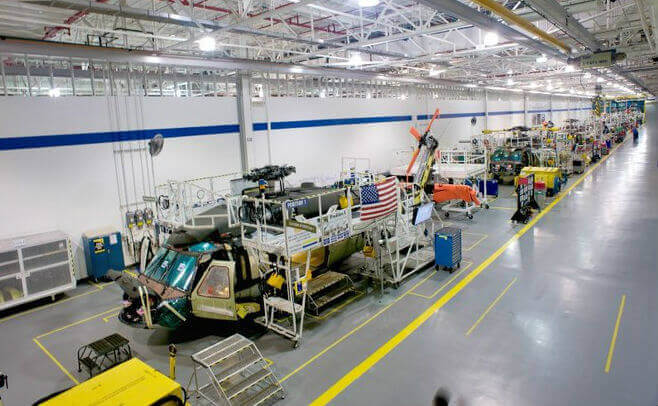There is little risk of the ongoing coronavirus pandemic disrupting production of U.S. Army rotorcraft in the near term, but the government’s global supply chain is at greater risk of seizing up the longer the crisis plays out.
While the novel coronavirus, and the COVID-19 disease it causes, has spread throughout the world and surged in the U.S. in recent weeks, the Army has stuck to its schedule for two important rotorcraft modernization programs. Last week Sikorsky and Bell were given the go-ahead to begin building prototype Future Attack Reconnaissance Aircraft (FARA). Earlier in the month, a Sikorsky-Boeing team and Bell moved into the Future Long Range Assault Aircraft (FLRAA) program of record where they will refine designs of the SB>1 Defiant and V-280 Valor, respectively.

For the next few months, those programs and the continued maintenance and upgrade of legacy AH-64 Apaches, UH-60 Black Hawks and CH-47 Chinooks should continue without hiccups, according to Army aviation officials. Beyond the summer, however, COVID-19 threatens to kink the global supply chain that feeds those programs.
“In the short term, do we have any supply chain issues? No,” said Pat Mason, program executive officer for Army aviation. “The question is, as we roll through the rest of the summer and depending on how long shutdowns go, or how long utilization rates go [down], how much pressure that continues to put into our supply chain, and how that is manifested as we move into the latter part of this year.”
“Short term, we’ve got sufficient inventory to continue production,” Mason added. “It’s really as it rolls out through the summer, into the fall, where we stand in our ability to continue at rate,” Mason said.
To keep an eye on the Army rotorcraft contractors, Mason is in daily contact with Boeing about the Apache and Chinook and Sikorsky about Black Hawk production. He talks regularly with General Electric about the engines that run those helicopters, especially production of the new T901 improved turbine engine that will power FARA.
All Army rotorcraft prime contractors are up and running in whole or in part. Some sub-contractors have seen disruptions at their plants because of the virus. Utilization rates at some of those lower-tier companies have dipped and some smaller manufacturing facilities have had to close at least temporarily because of infections, he said. It’s the continued viability of sub-tier suppliers that concerns Mason.
“They are facing significant budget and financial headwinds right now and so we want to make sure that we don’t have sub-tier suppliers at risk as we move through this and that we are well informed of where they are so we can do what’s necessary to ensure the continued operation of the defense industrial base,” Mason said.
Prime contractors are operating under a memorandum published March 22 by Ellen Lord, undersecretary of defense for acquisition and sustainment. That memo states that “companies aligned with the essential critical infrastructure workforce definition are expected to maintain their normal work schedules.”
“If your contract or subcontract supports the development, production, testing, fielding or sustainment of our weapon systems/software systems, or the infrastructure to support those activities, [you] are considered essential critical infrastructure,” Lord wrote in the memo.
Joseph Giunta, a senior contracting official at Army Contracting Command, Redstone Arsenal, said the Army has issued similar guidance to its contractors and expects them to conduct business as usual.
“Our expectation and direction to our primes is they will continue to work in accordance with the guidance provided to the defense industrial base,” Giunta said. “If we have issues, whether it be at the prime or at the sub[prime] base, we will address those individually as exceptions,” he said. “We may have those . . . but right now our expectation is that they will continue to move forward.”









